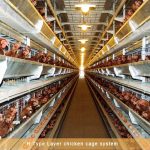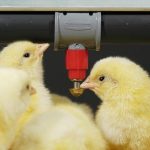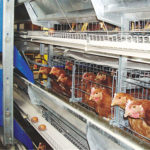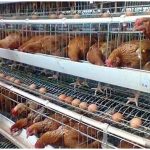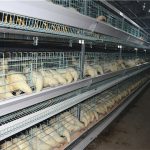1. Increasing the number of feeds can stimulate the appetite of the flock. The specific method is to use 2 or 3 feedings in the summer to keep the material in the trough relatively small. At the same time, the breeding birds tend to be more excited when feeding, and the number of chickens eating is obviously increased.
2. Feeding early, at 6:00 in the morning, you can start feeding when you start lighting. As the chickens wake up from sleep, they are more excited. The feed they eat the day before has already been consumed. The hunger is strong. Many hens have not yet reached the time of laying eggs, plus this is the most weather of the day. When it is cool, feeding at this time can greatly increase the feed intake of the breeder.
3. The daily feed intake of summer breeders is affected by heat stress and often falls short of requirements. Therefore, at the peak of laying eggs, the breeder can be fed ad libitum and eat as much as possible to meet the production needs. At this time, it is generally inappropriate to adopt the conventional restricted feeding method for the breeder. The time for free feeding depends on the production level. The time is generally controlled in 4 to 6 weeks.
4. Use electrolytes and vitamins to reduce the effects of heat stress. When heat stress, you can add some electrolytes and vitamins to the feed and drinking water of the breeder, which can play a good role in relieving heat stress. Sodium bicarbonate, ammonium chloride, vitamin C, etc. may be used.
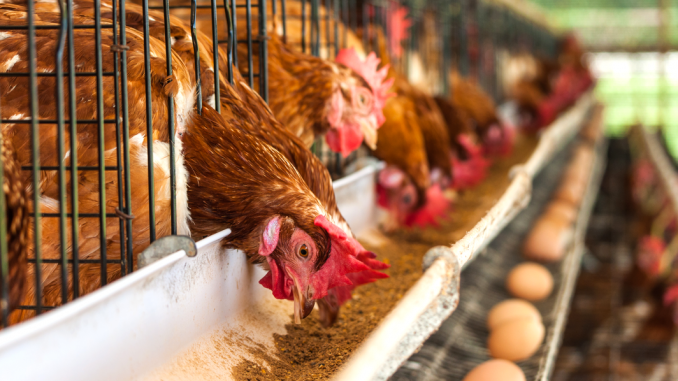
In the summer, in order to expel excess body heat, the chicken will speed up breathing, resulting in excessive discharge of carbon dioxide, lowering of carbonate in the blood, and affecting the quality of the eggshell. Therefore, supplementing an appropriate amount of sodium bicarbonate at this time can maintain the normal level of carbonate ions in the body and reduce the effect of heat stress on the quality of the eggshell. The amount of sodium bicarbonate is 0.1% to 0.5%. At the same time, adding 0.02%-0.04% of vitamin C to the feed can significantly inhibit the increase of body temperature, increase feed intake, and help maintain egg production rate and fertilization rate.
Under severe heat stress, chickens are prone to respiratory alkalosis. Adding 0.3% ammonium chloride to drinking water can significantly reduce the pH of the blood and relieve respiratory alkalosis.
5. Reduce the temperature of the drinking water of the breeder. It has been reported that when the temperature of the drinking water is lowered by 5 °C during heat stress, the effect of relieving heat stress can be well achieved, and at the same time, it can stimulate the appetite of the chickens and help maintain The production of breeders is stable. Therefore, in the summer, it is best to use water with qualified water quality. At the same time, the water pipes exposed to the sun are deeply buried, and the depth is required to be more than 20cm, so that the drinking water sent to the chicken house is cool.
6. Strengthen daily inspections. In the summer, the breeding farm should set up a special heatstroke prevention and cooling inspection team to regularly check the heatstroke prevention and cooling work. The contents of the inspection mainly include the following aspects: whether the drinking water supply of the chickens is sufficient every day; during the afternoon work hours, whether the various heatstroke prevention and cooling equipments in the chicken houses are functioning properly, the fan operation and the effect after spraying; The implementation of the heatstroke prevention and cooling measures; the ambient temperature in the chicken house, the severity of the heat stress in the chickens, especially in the evening, to strengthen the inspection to prevent heatstroke in some breeders, and once discovered, organize the forces to deal with them as soon as possible. Pay close attention to the changes in the weather. In case of continuous high temperature weather, plan to use some heatstroke prevention and cooling drugs to reduce the degree of heat stress damage to the flock. After a period of time, the measures for heatstroke prevention and cooling of the field should be evaluated to judge the effect after implementation and to solve the existing problems in time.
7. Disinfection of thechicken battery cages, whenever the flock comes out for food. It is possible to spray a large area of the drug in the cage, which can play a role in disinfection and prevention. It is best to keep the disinfection cage at least twice a week during the summer. And after each disinfection, if conditions permit, you can also clean the cage with water. After cleaning, use a blow dryer to dry the cage.


